Category: Hunting Tactics
Creating A Great Hunting Location
Last week we finished planting! The cereal rye was successfully crimped by the Goliath and Eagle Seed beans are already germinating through the terminated rye! During the following months, the Eagle Seed forage soybeans will supply our deer herd with quality forage. Not only do we plant quality forage to promote healthy deer, it is a great way to attract deer and create a great hunting location this deer season!
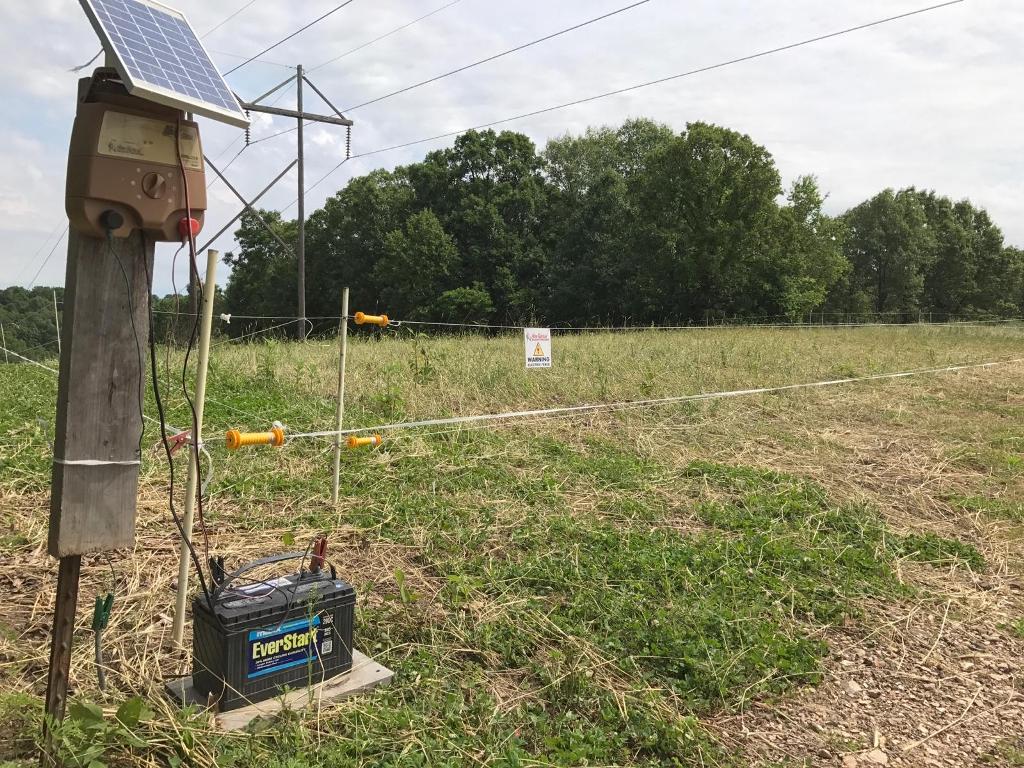
This plot is within bow range of our Summit stands and will be a great hunting location when deer are eating standing grains!
Every year we protect a portion of our Eagle Seed beans during the summer months with a Non-Typical Hot Zone Fence in select locations. This ensures that even though deer may browse outside of the fence, they do not consume all the forage in the area. When season rolls around, we can simply open the fence and have a great food source to hunt over!
Here are the steps to take when setting up your Hot Zone fence:
1. Create the fence with your hunting strategy in mind. Think of where your stand or blind will be located in relation to the fence/food source. Consider which wind to hunt and how to enter and exit without alerting deer.
2. Build the fence as soon as beans begin to germinate. You do not want deer to associate the beans inside the fence as a food source. This will decrease the chances that deer will try to jump the fence to feed inside.
3. Make sure it is set up correctly. The Hot Zone electric fence works because it is designed as a two fence (3 strand) barrier. The outside fence has a thick, tape-like polyline that should be strung 18 inches from the ground. Three feet inside the outer fence there should be another fence that has two stands of polyline. The lower wire should be 10 inches from the ground and the top wire 24 inches from the ground.
4. Keep the electric fence turned on ALL summer. If the fence is not on during a portion of the summer, deer will learn that they can jump it with out consequences and will do so even when it is turned on.
5. Open the fence when the conditions are right for hunting! If you open the fence when it is hot and deer are feeding during the night, they can easily lick the field clean during several nights (depending on the size of the field). Or if there is not a suitable wind forecasted for hunting, deer can browse it quickly before you are able to effectively hunt.
If you’re a small food plotter and wish to save quality forage for early deer season or wish to allow beans to mature so that you can hunt over standing grain this winter, the preparation starts now! Stay tuned this summer as we share updates about our food plots and hunting strategies as we prepare for fall!
Enjoying Creation,
Daniel
Advanced Trail Camera Tactics
Trail cameras have become a pivotal tool for whitetail hunters. They are beneficial in so many ways and allow us to scout every hour of every day for the entire year. Sometimes bucks show up on trail camera during certain time periods only to disappear days later. I thought this was the case for a particular buck I got a few pictures of during January of 2014.
This buck showed up on the fringes of the property I hunt and he appeared to be a solid three-year-old 8 point with potential. I soon forgot about the deer as the seasons changed, then fall rolled around and he was back. He carried a wide, thin rack and was a regular on the property but I had my sights set on another older buck. All my efforts that deer season and the next were focused on harvesting other deer so he flew under my radar. During the winter of 2015, two years after my first pictures of the wide 8 point, I browsed through all my trail camera images of mature bucks and realized this buck had blossomed into a very nice deer. I placed him at the top of my 2016 hit list.
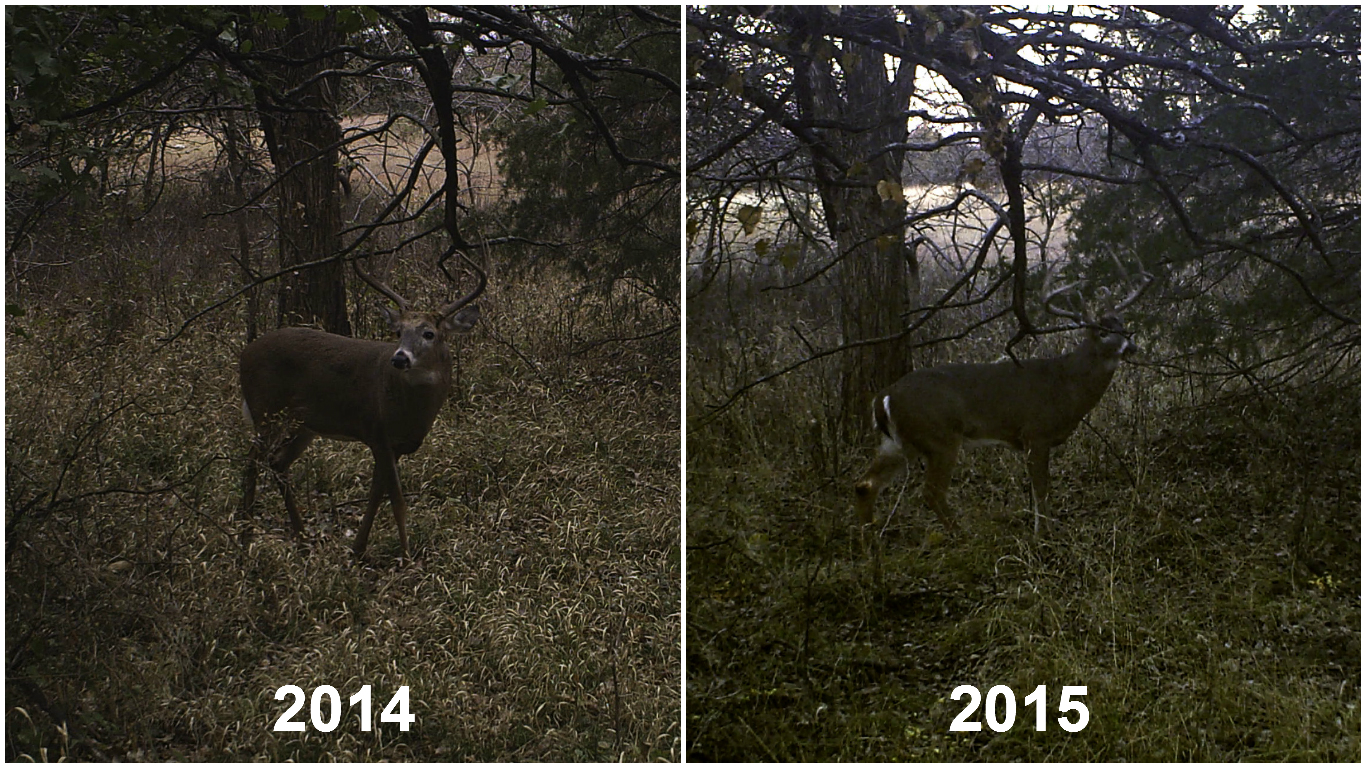
As the fall of 2016 progressed, I did not have a single image of this buck. He usually showed up around the first of October; I had some worries but I remained hopeful he was still alive. My worries soon vanished during my first hunt of the year. On the morning of October 30th we crossed paths and I was able to write the final chapter on the story of the wide 8 point. By using trail camera data from previous seasons, I was able to determine when and where this buck made appearances which helped me pick strategical blind and stand locations.
The use of cameras can be a fun way of determining what animals are on your property, however, they can also be utilized in more advanced ways. I have found that the biggest advantage is the ability to predict movement of mature bucks based on movements from previous seasons (watch the hunt for Handy here to see this tactic in action). When next deer season comes around, open up last year’s images and study them in depth. Look at dates, times, temperature, wind direction, barometric pressure, and a host of other factors that may give you an upper hand on tagging your next mature buck!
Enjoy Creation,
Tyler
Hunting Tips For Late Season Success
I recently was blessed to travel to northern Missouri for a successful late season hunt. I always enjoy traveling back to my hometown and climbing into the stand. During the late season there’s a specific property I really enjoy hunting because it has three things that lead to successfully tagging deer.
The property is simply the “right” 80 acre chunk of timber. The stand of hardwoods is surrounded by ag fields and cattle pasture making it the best “cover” in the area. The timber is one large ridge and deer move consistently along the contour of the land. There are several saddles running perpendicular to the top of the ridge. Deer funnel up in the mornings and down in the evenings moving to and from food and cover. If cover and food wasn’t enough, there is a large creek that divides the ag fields from the timber. There is food, water, and cover within 100 yards of each other.
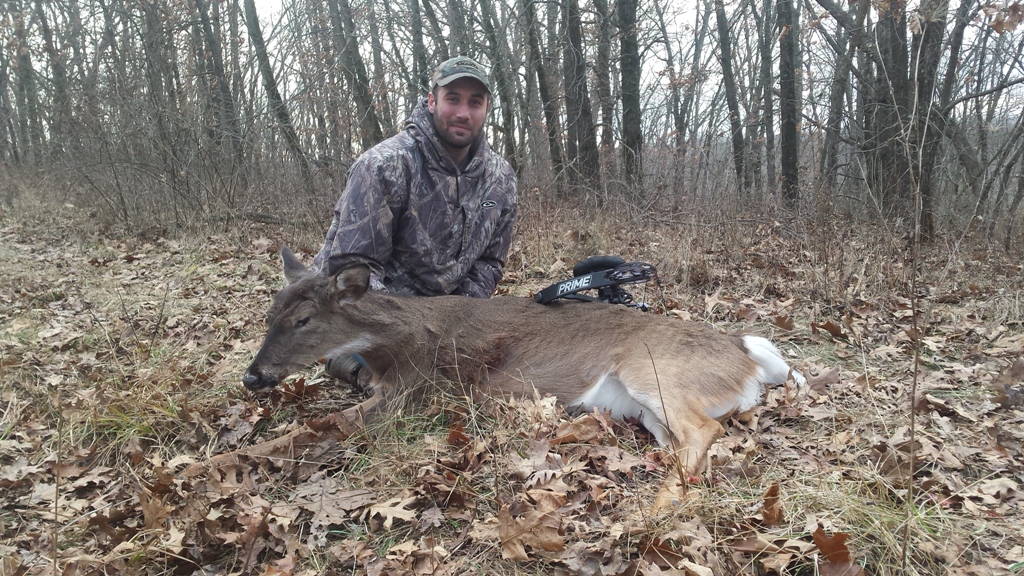
This doe was traveling from a food source to a bedding area during a late season hunt.
Not every property is laid out like the one I hunt back home but the same basic principles lead to successful hunting tactics. We use these exact hunting strategies at The Proving Grounds. Understanding how deer move on a property in relation to food sources, cover, and water is the biggest key to hunting the entire season – especially during the late season.
During the late season, quality cover and food become extremely important. Deer need energy to get through the lean periods of winter. Often by the late season, deer have been pressured by hunters and hungry predators and are seeking the best cover available. That is when finding the travel corridors become critical to late season success. Deer are often on their feet during daylight hours traveling to and from these two sources.
If you still have a few days or weeks left of season, you may consider honing in on how deer are moving from cover and food. If your season has already ended, it is a great time to get into the woods and begin scouting for next year. Deer sign is often easy to read this time of the year and can pay off in years to come.
Enjoying Creation,
Daniel
Keys to Hunting Success in the Post Rut
For most deer hunters, the anticipation for the rut builds for many months. However, the season always seems to drift away much faster than it arrives. If you were unable to fill a tag by the end of the rut, it can be easy to get discouraged. Don’t give up yet! It only takes a few pieces to unlock the key to post rut success.
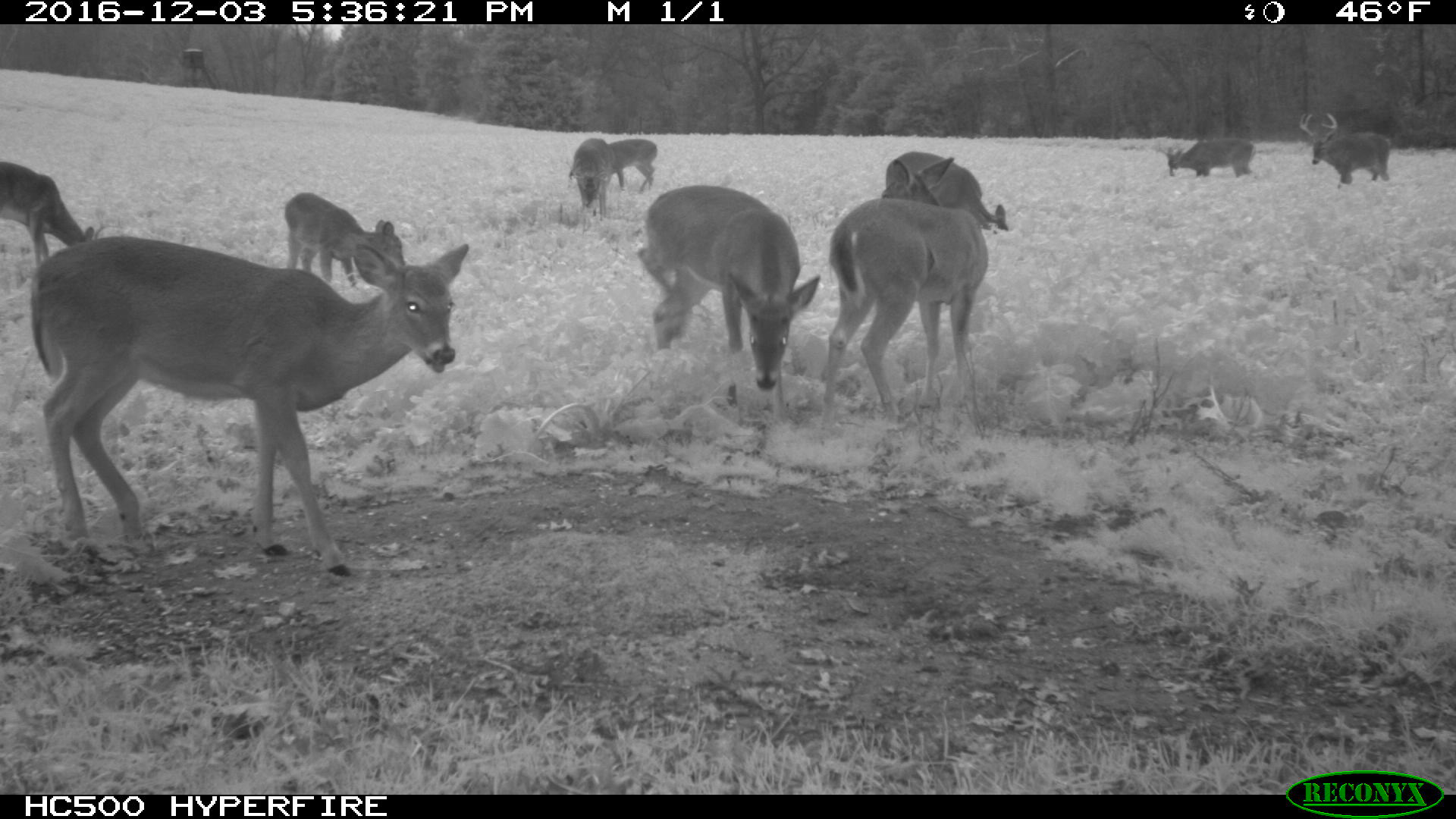
Hunting food sources can help tag a late season deer.
A whitetail’s body goes through a lot of stress during the rut. It’s critical that they refuel and replenish during the next few months to survive through the stress period of late winter. As slaves to their stomachs, this can be the weak link in their travel patterns and can make them fairly easy to pattern.
Hunting areas that are near, or on food sources, can give you the advantage you need to seal the deal. Some of the most attractive food sources this time of year are grains, like soybeans and corn, or brassicas, like radishes and turnips. Deer tend to feed more during daylight hours on days when the temperature is lower than average so bundle up.
Did you take the time and effort earlier in the season to plant food plots? Have you scouted to find the best food source in the area? Then your hard work is about to pay off.
Time your hunts with cold temperatures, a solid food source, and a favorable wind. This is the absolute best ticket to filling a tag in the post rut. Whether you’ve already filled a tag or not, don’t let the post rut blues take you out of the game. With the right conditions, and maybe another layer or two, you can still experience some of the best hunting the season has to offer.
Enjoy Creation,
Clay
Prepare For A Second Surge
Keep those seat belts fastened! The post-rut in many portions of the whitetail’s range is just around the corner. Oftentimes this phase of the rut is just as exciting as the first. The post-rut is the period of time after the primary lock down phase where bucks are back on their feet seeking the last remaining receptive does. With fewer does receptive during this time, bucks generally travel more. The keyword here is “travel!”
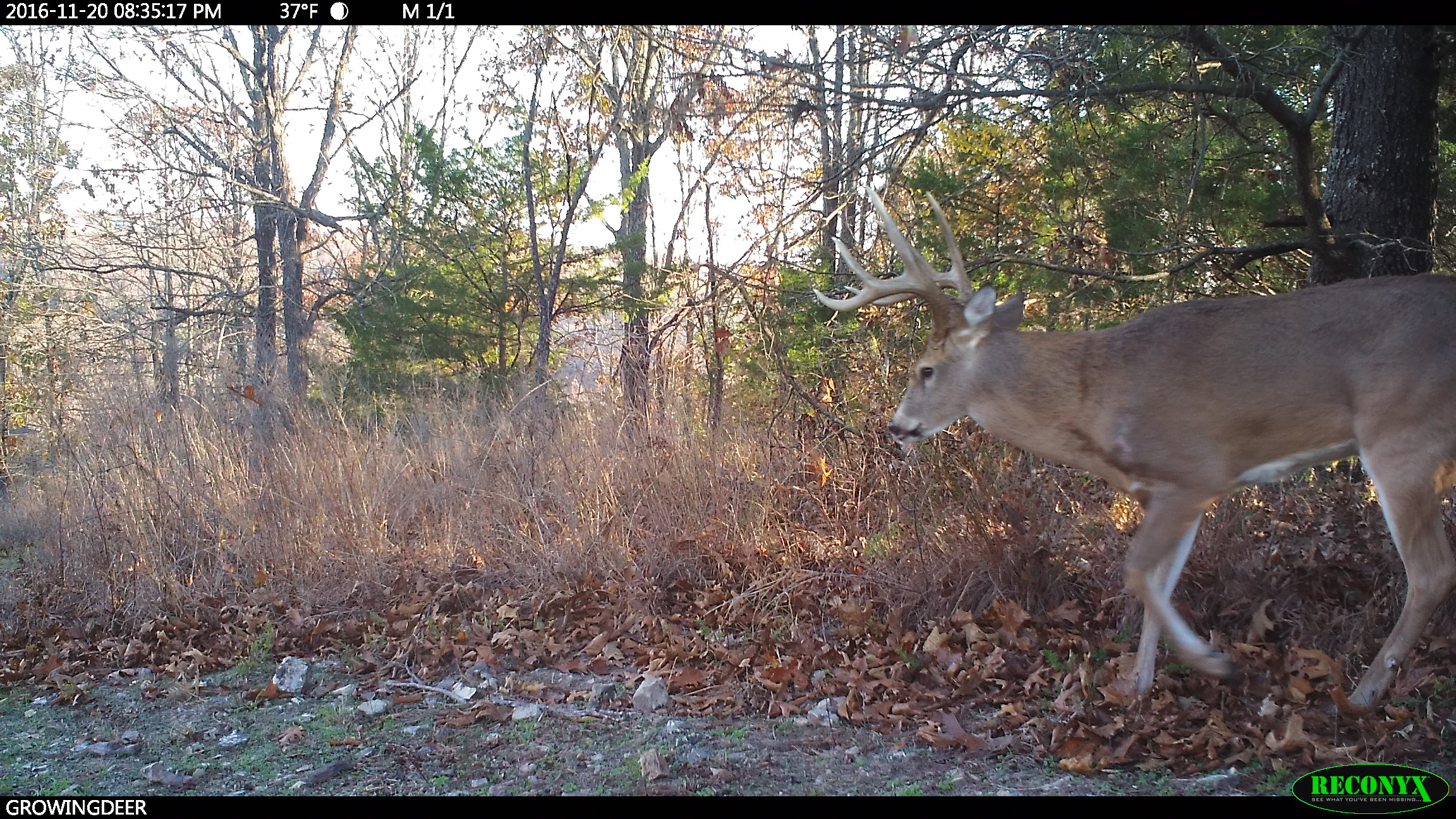
Southpaw is in pursuit. Notice his proximity to thick cover!
Over many years here at The Proving Grounds we have documented the average conception date to be November 14th -16th. This means most of the does are bred during this period, but not all does will come into estrous at this point. Some will come into estrous after this time frame. The number of does will be far less than the peak rut, as a result, there will be increased competition for them. The smaller percentage of receptive does requires bucks to travel further and longer. Traveling this much often results in more daylight movement.
To capitalize on does still being receptive and bucks on their feet, position yourself along a travel corridor between bedding areas. After nearly a month of being pushed and pestered, does often seek thick cover for refuge. Bucks will be working edges with the wind in their favor to find them. This is when travel corridors become great places to intercept mature bucks.
Don’t give up on the rut yet! There is still great action to experience in the deer woods. Stay persistent and hunt smart!
Chasing whitetails together,
Matt Dye
Tough Hunting Conditions
It is hot out there! Across much of the whitetail’s range temperatures are warmer than average. This makes for less than ideal hunting conditions. Typically The Proving Grounds has already received a frost. To date, we’ve had one morning dip into the thirties. Needless to say, the hunting has been tough!
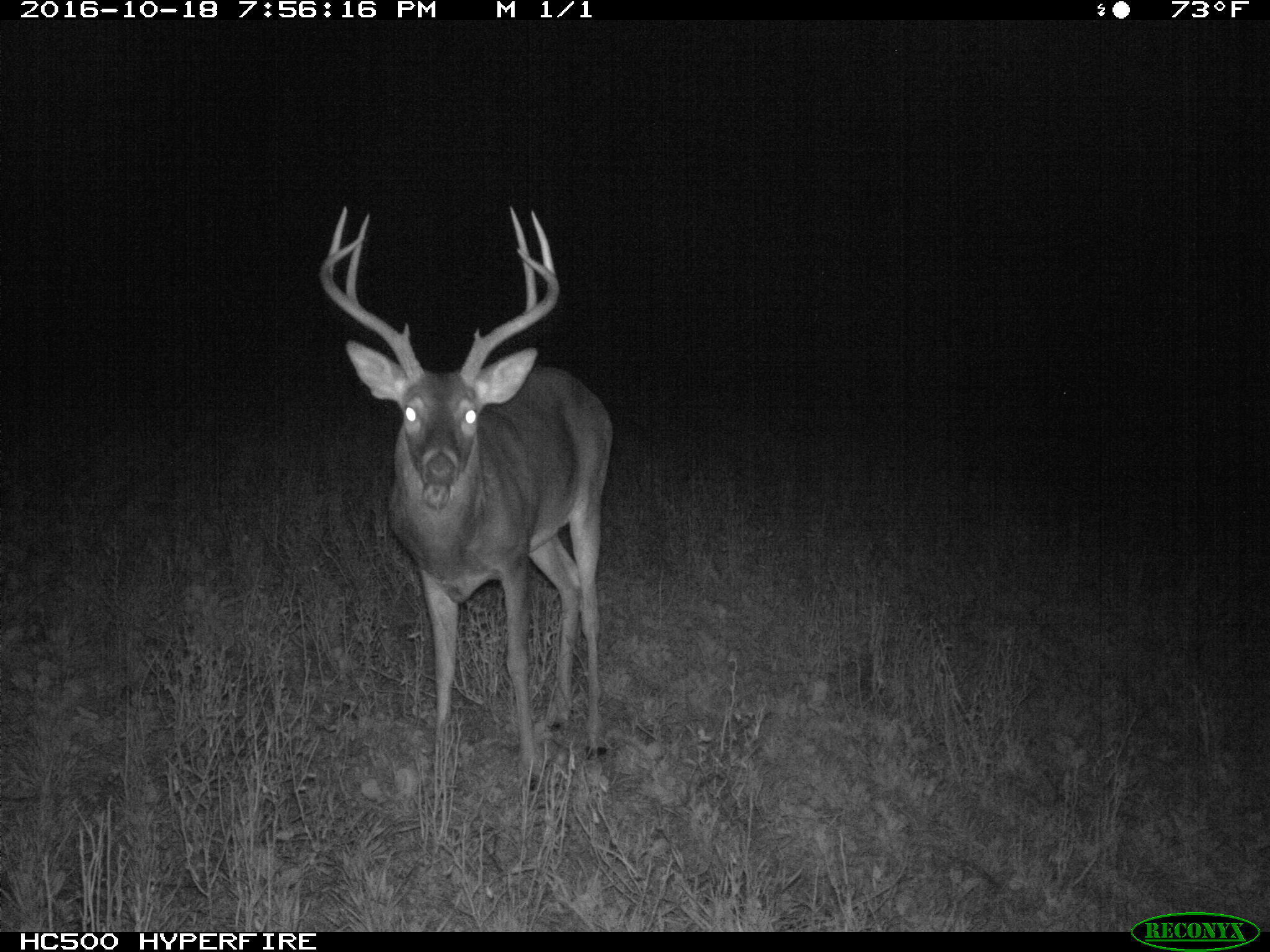
This buck is making regular appearances to this plot just after dusk!
Deer are not fans of moving when temperatures are unseasonably warm. They have already shed their summer coat; when conditions are warm deer movement tends to be slow during daylight. Here are a few techniques we use to fill the freezer when it is warm:
Hunt the Greens! We plant the Eagle Seed Broadside blend each fall. This is a four-way blend: soybeans, wheat, brassicas, and turnips. When planted appropriately, this food plot turns into a lush, thick stand of greens. The secret to greens is their attractiveness, as well as a food source with minimal carbohydrates. This means less energy or heat is built up. In return deer feed for longer periods and more often. When this occurs, deer tend to visit plots more often making the chances of tagging one even greater!
Hang Close to the Bedroom. By hanging stands close to bedding cover deer will travel a shorter distance before reaching your stand. The first and last half hour of daylight will be the best time to catch deer on their feet. Sliding in closer to the bedroom increases your chance of success. Entry and exit to these stand placements is critical! Don’t take short cuts, be thorough and success will follow.
The pre-rut is here, who knows what can happen! Get outdoors and embrace the warm weather by implementing these techniques!
Enjoy Creation,
Matt
Got Nighttime Deer Movement?
During this portion of the season many folks experience limited daylight deer movement. It can be frustrating to see hit listers on camera only during the cover of darkness. One of the most frequently asked questions is, “How do I hunt these deer?”
There isn’t a clear cut answer that will result in harvesting a nocturnal buck. Below are the techniques we use when hunting nocturnal bucks.
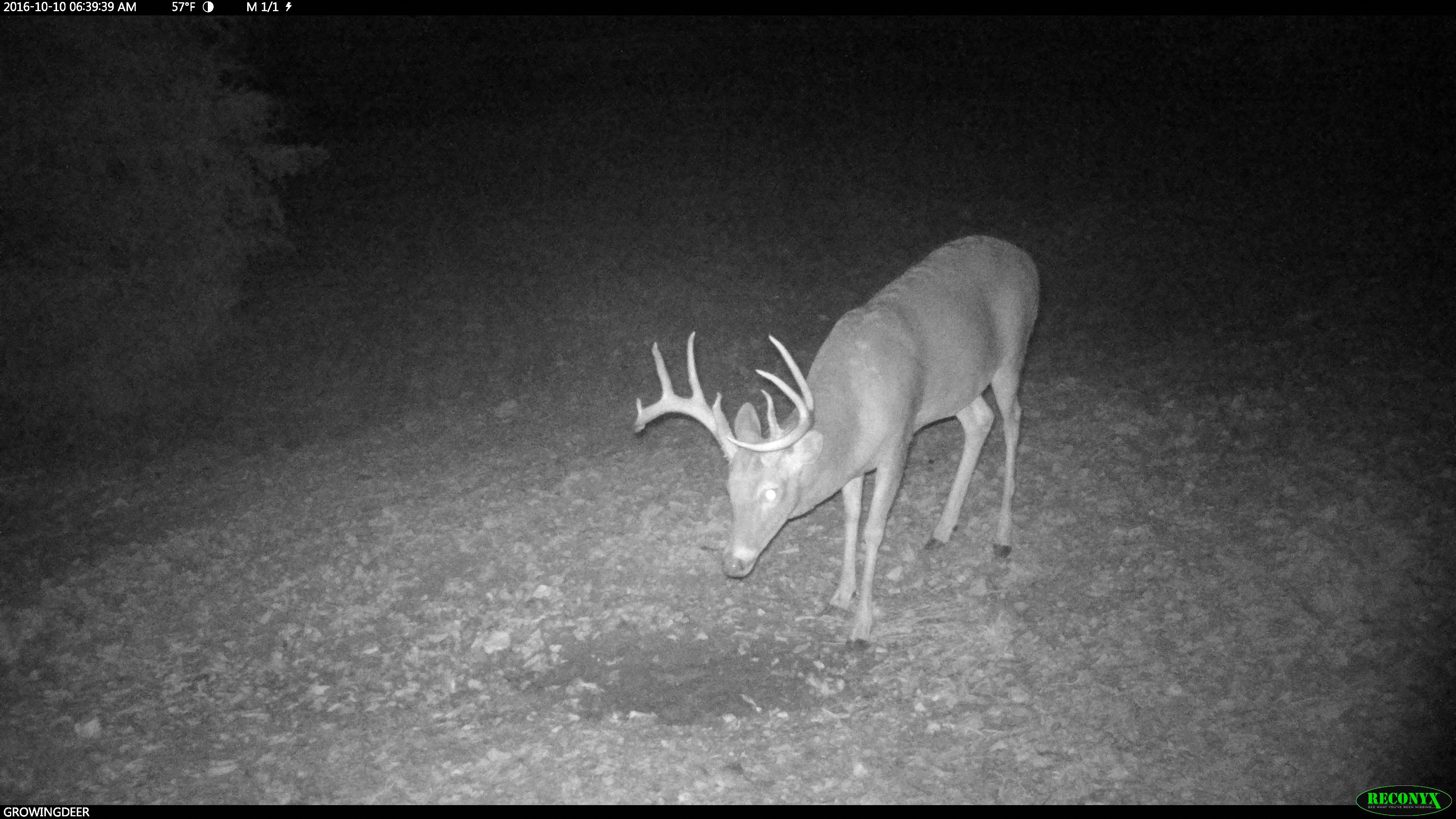
We are closing in on this 4.5 year old buck, Headturner. We may need to wait until the rut to hunt his preferred travel route.
One of the first things we do is cut the distance. We have designated sanctuaries at The Proving Grounds. Much of the bedding occurs within these areas throughout a season. When a mature buck has a nocturnal pattern we start to back track his movements. By using terrain features and known deer trails the preferred bedding areas can be located. Once we’ve pinpointed travel routes to and from the bedding area, we hang a Summit. By cutting the distance close to the bedding area the odds drastically increase.
Next, we sit and wait for the right weather. Cold fronts generally get deer up and moving earlier than usual. This is the time to slip into this stand and hunt, hopefully catching the nocturnal buck on his feet during daylight hours.
Another option, simply wait. If a buck is traveling through an area that is unapproachable then wait! Knowing when to hunt is often just as important as knowing when not to hunt. As the rut nears bucks will begin to travel more. Research out of Pennsylvania has shown bucks travel nearly three times as much during November as they do in October. With that being said, that same nocturnal buck will become more visible during daylight hours. To put the odds in your favor, it’s best to locate a heavily used pinch point in the area. Now you are in the best location to observe the increase in deer activity. Waiting until conditions are favorable is often the quickest way to success.
Remember, pressuring deer only makes them more nocturnal.
If trail cameras are lighting up after the sun has set, there is still hope! Depending on the buck’s core area and travel routes these hunting strategies can keep you in the game. Don’t give up on a nocturnal buck, there is a time and place when that deer will become harvestable.
Chasing Whitetails,
Matt
The Power Of Doe Patterns
Hold on to your seats, the rut is on the way! Within the next few weeks across much of the whitetails’ range pre-rut activity will increase. This spike in deer activity can make for excellent hunting. To capitalize on bucks spending more time on their feet during daylight hours, you need to find the does!
At this stage of the game, most hunters have bucks on their minds. But, if you plan on filling tags during the pre-rut phase, it’s important to know where the does are. During this stage bucks are just beginning to search and pester does. As a result, does have not yet begun to alter feeding or bedding patterns. This means they are still on a routine. It’s important to study patterns that show up on trail cameras and adjust stands to accommodate them. If done correctly stands will be ready when bucks are most active.
Don’t think you are the only one picking up on these patterns though. Scrapes are a line of communication among deer. By using scrapes deer can determine which individuals are most active in certain areas. Bucks know where does are frequently visiting as well. They too will be concentrating efforts around doe patterns. This will eventually change once does start seeking denser cover to hide from bucks. However, during the pre-rut phase, does are an important part of putting the puzzle pieces together. Being prepared in advance to hunt locations frequented by does may result in sightings or even punched buck tags.
Chasing Whitetails,
Matt Dye
New Developments!
Last week Adam discussed the recent patterns of a buck we call Handy. We had predicted earlier in the summer he would shift to the center of the property. As of last week he hadn’t, keeping us on our toes. This week, the Reconyx captured Handy making the moves we’ve anticipated.
This great video of Handy working a scrape was taken in the center portion of the property. Boom Back is a portion of a ridge where Handy frequented the last two falls. We are confident Handy will remain in this area for the remainder of the season. This is exciting news for the GrowingDeer Team as we have been preparing our Summit treestands and Redneck Blinds for this moment.
Now that we are prepared it’s time to sit back and wait! This time we are waiting for the right conditions to hunt. This area is sensitive and tough to access. Therefore, we are waiting for cooler temperatures, high pressure, and strong winds to hunt. These factors combined tend to get deer on their feet and moving. The morning this video was taken was cold with a high barometer reading. We will be closely monitoring our Reconyx cameras and weather to determine if any more information can be gathered on this buck’s patterns.
Remaining patient for the appropriate time to strike is critical in this stage of the game. We will keep you posted! Be sure to follow along on our Facebook and Instagram pages as we set out for Handy in the coming weeks!
Enjoying Creation,
Matt
The Changing Pattern Of Handy
The GrowingDeer Team has kept a close eye on our favorite hit list buck, Handy, throughout the summer. We watched him regularly frequent a food plot on the northern part of The Proving Grounds. As most hunters who have ever watched whitetails throughout the year know, the changing of summer to fall usually brings changes to deer patterns. The same is true for Handy and his summer pattern.
Our last pictures of Handy in velvet came in early September with his running partner Southpaw. After seeing Southpaw had already shed velvet we knew the pattern was soon to change. After those images we went two weeks without a single Reconyx image of Southpaw or Handy. Finally, we found these two bucks in a least expected food plot! North Field is a short distance from where we had captured Reconyx images of these two bucks all summer.
The great news about our MRI (Most Recent Information) is the location of our Redneck trailer blind. We had positioned the Redneck blind in North field a few weeks ago to help us harvest does. We often talk about not hunting mornings during the early season due to the arrangement of our road system to food plots. Fortunately, North Field is one of the few plots we can intercept deer going from feeding back to bedding during the morning hours. It looks like a morning hunt is in store!
Stay tuned to upcoming episodes and blogs as we’re in pursuit of Handy!
For Love of the Land and the Glory to God!
Adam





















